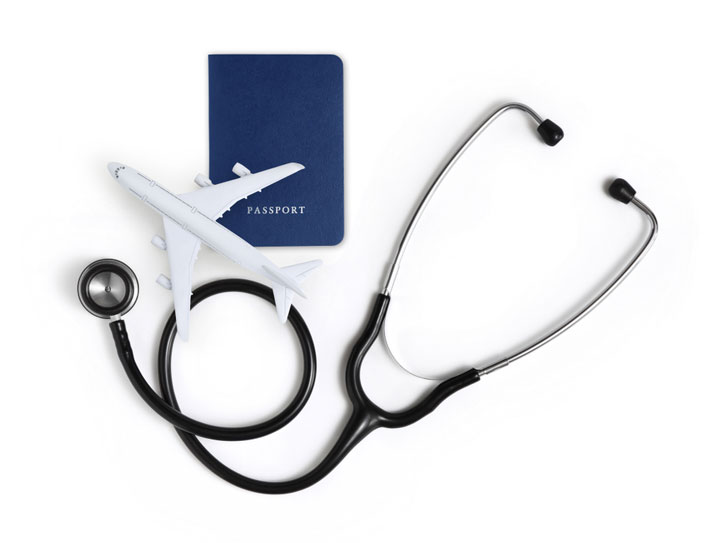THE NURSING PROFESSION offers many specialty roles, including both direct patient-care roles (such as emergency, neonatal, and school nurse) and indirect roles (such as nurse manager, case management, and quality improvement). Transitioning from one specialty to another requires an orientation and learning period.
Competencies help clarify professional expectations and create a professional development learning plan for your new nursing role. They describe what you need to know for a specialty role, easing and speeding your transition.
Defining competency
The American Nurses Association (ANA) defines competency as “an expected level of performance that integrates knowledge, skills, abilities and judgment.”
• Knowledge is the cognitive aspect of competence, incorporating thinking and understanding of the nurse’s role and responsibilities.
• Skills include those related to communication and psychomotor activities, such as bedside shift report and starting an I.V. line, respectively.
• Ability refers to applying professional nursing behaviors effectively.
• Judgment encompasses ethical reasoning, critical thinking, and appropriate application of other aspects of nursing.
ANA developed a position statement on professional competence, which supports the profession by outlining these aspects of competence and describing how ANA uses them to define the profession’s unique knowledge and practice.
Foundational documents
Several ANA documents are foundational to the nursing profession and clarify expectations for practicing nurses. Each one discusses competence.
Nursing: Scope and Standards of Practice, 3rd ed., defines the scope of nursing practice and describes a competent level of nursing care and behavior in the professional role.
Nursing’s Social Policy Statement: The Essence of the Profession defines nursing’s values and responsibilities to society. Guide to the Code of Ethics for Nurses with Interpretive Statements: Development, Interpretation, and Application clarifies and applies ethics within the profession. Both documents help define and apply competence in serving to protect the public and individual registered nurses, as well as the integrity of the nursing profession. They emphasize that individual nurses are responsible for determining their own competence and developing their professional selves to protect the public by advocating and caring for their patients.
Role of nursing specialty organizations
If you’re transitioning to a new specialty, using that specialty’s standards of practice and associated competencies can aid your transition and help you understand the expectations for which you’ll be held accountable.
For example, the Emergency Nurses Association’s (ENA’s) Registered Nurse Core Competencies in Emergency Care Work Team published an article on how to translate the emergency nurses’ standards of practice document into various competencies. The article cites examples of various standards and learning domains. Megan Flynn Harding, RN, staff nurse in the emergency department (ED) at St. Luke’s Hospital in New Bedford, Massachusetts, explained, “ENA’s Emergency Nursing: Scope and Standards of Practice really helped to outline expectations when I got started in the ED.” St. Luke’s ED maintains an orientation education record with competencies to ensure completion of required documentation for each registered nurse.
Expert materials
Many specialty organizations offer expert materials with competencies for nurses transitioning to a new role.
• The American Association of Critical-Care Nurses has a well-known program called Essentials of Critical Care Orientation.
• ENA offers Emergency Nursing Orientation, with various competencies based on its standards of practice.
• The Association of periOperative Registered Nurses offers a Periop 101 course, which takes a didactic approach to transitioning into its specialty.
Most specialty nursing organizations list education as part of their mission or values, promoting competencies as one reason for their existence. Every specialty organization seeks to support nurses in their ability to care for patients and advocate on their behalf.
An exciting challenge
Transitioning to a new specialty in nursing practice is an exciting career opportunity. It allows nurses to explore new dimensions of their professional role, learn new aspects of their profession, and meet new people. Although the transition can be challenging, using the new specialty’s professional scope and standards of practice competencies can help clarify what will be expected of you. Join your specialty nursing organization and take advantage of their educational offerings to support your career.
Andrew D. Harding is the associate chief nursing officer at Charlton Memorial Hospital in Fall River, Massachusetts.
Selected references
American Nurses Association. Nursing: Scope and Standards of Practice. 3rd ed. Silver Spring, MD: Author; 2015.
American Nurses Association. Nursing’s Social Policy Statement: The Essence of the Profession. Silver Spring, MD: Author; 2010.
American Nurses Association. Position statement: Professional role competence. Silver Spring, MD: Author; 2008. (Reaffirmed November 2014.)
American Nurses Association. Recognition of a nursing specialty, approval of a specialty nursing scope of practice statement, and acknowledgement of specialty nursing standards of practice. Silver Spring, MD: Author; September 2010.
Emergency Nurses Association. Emergency Nursing: Scope and Standards of Practice. Silver Spring, MD: Author; 2011.
Fowler M. Guide to the Code of Ethics for Nurses: with Interpretive Statements: Development, Interpretation, and Application. Silver Spring, MD: American Nurses Association; 2015.
Harding AD, Connolly MW. Remediation: a necessary function for employers to correct incompetence regarding clinical professional registered nurse practice. JONAS HealthC Law Ethics Regul. 2012;14(2):48-52.
Harding AD, Walker-Cillo GE, Duke A, et al. A framework for creating and evaluating competencies for emergency nurses. J Emerg Nurs. 2013;39(3):252-64.
Walker-Cillo GA, Harding A. The art of remediation in professional emergency nursing practice. Adv Emerg Nurs J. 2013;35(2):129-42.



















